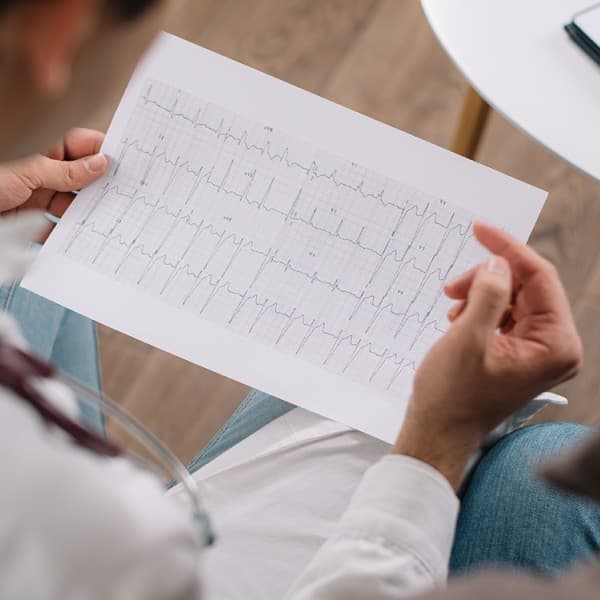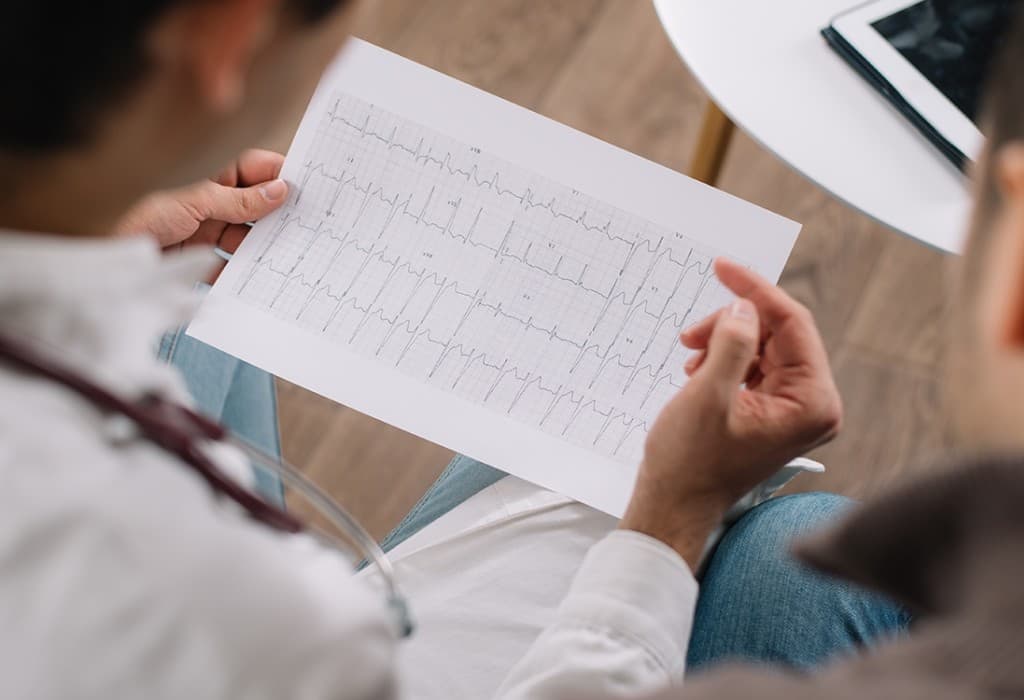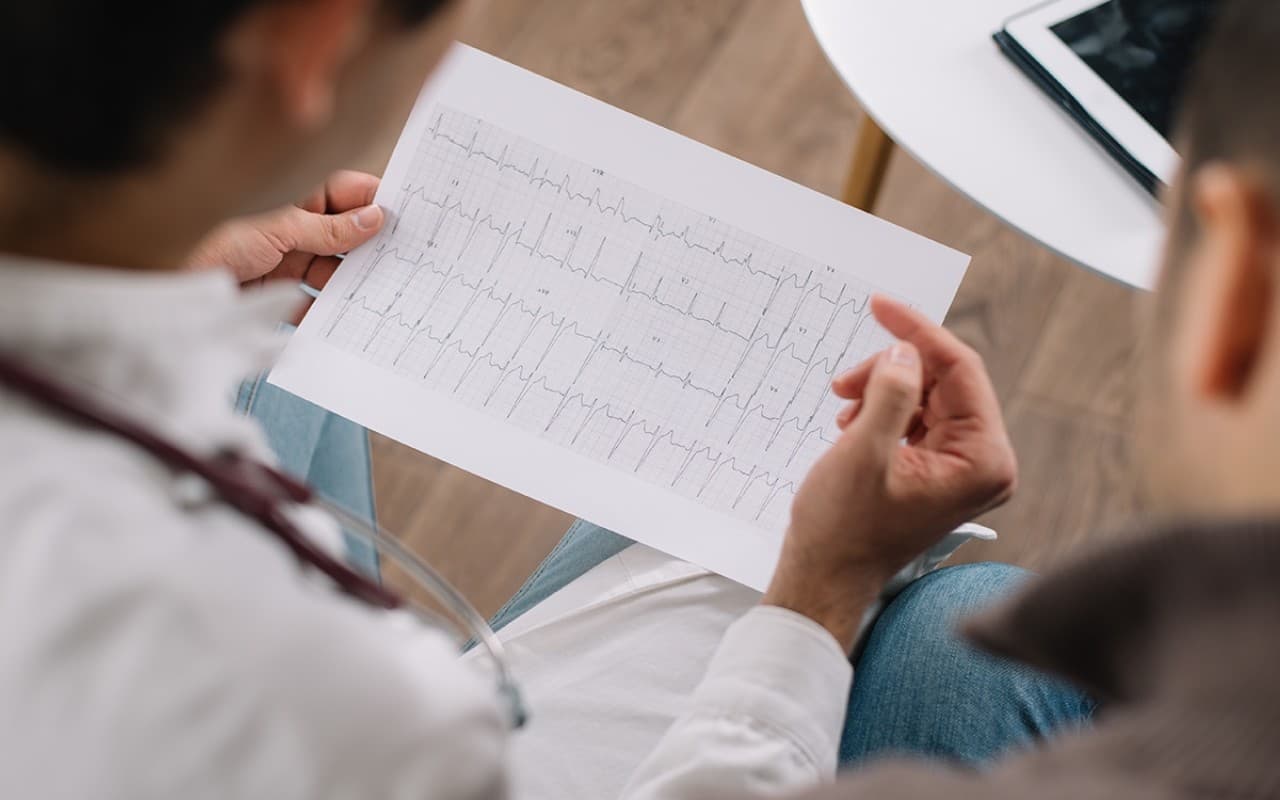How is AFib usually diagnosed?
Diagnosis begins with an honest and in-depth consultation with your doctor. They’ll want to know about your symptoms: what sort of discomforts are you experiencing? How often do they strike? How long does an episode typically last? Once they’ve got your account, they’ll consider your medical history, and then explore further with some targeted testing.
Some of the most common tests include:
Electrocardiogram.
A reliable and non-invasive heart test, the EKG (or ECG) is a primary clinical tool for diagnosing AFib. Now,
you can use the same technology
outside of the doctor’s office.
Check pulse, blood pressure, and lungs.
Typically, this is one of the first things your doctor will do to rule out other conditions that could be masquerading as a heart rhythm disorder.
Stress testing.
Also known as exercise testing, a stress test involves measuring how your heart behaves during cardiovascular exercise. This could take place on a treadmill or another cardio machine.






%2F1_HowCanTheMazeProcedureRelieveAFib_2024-01-08-201903_qefy-hero-sm.jpg&w=3840&q=75)
